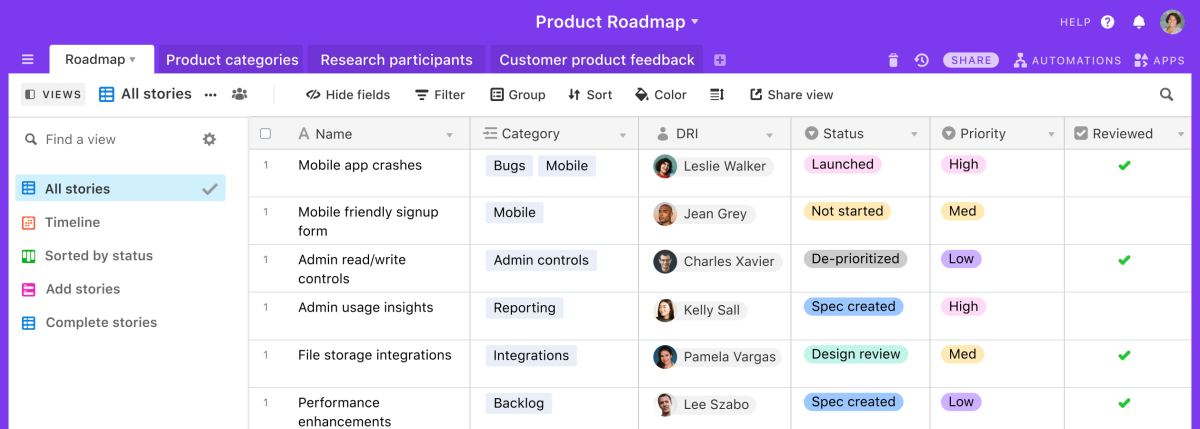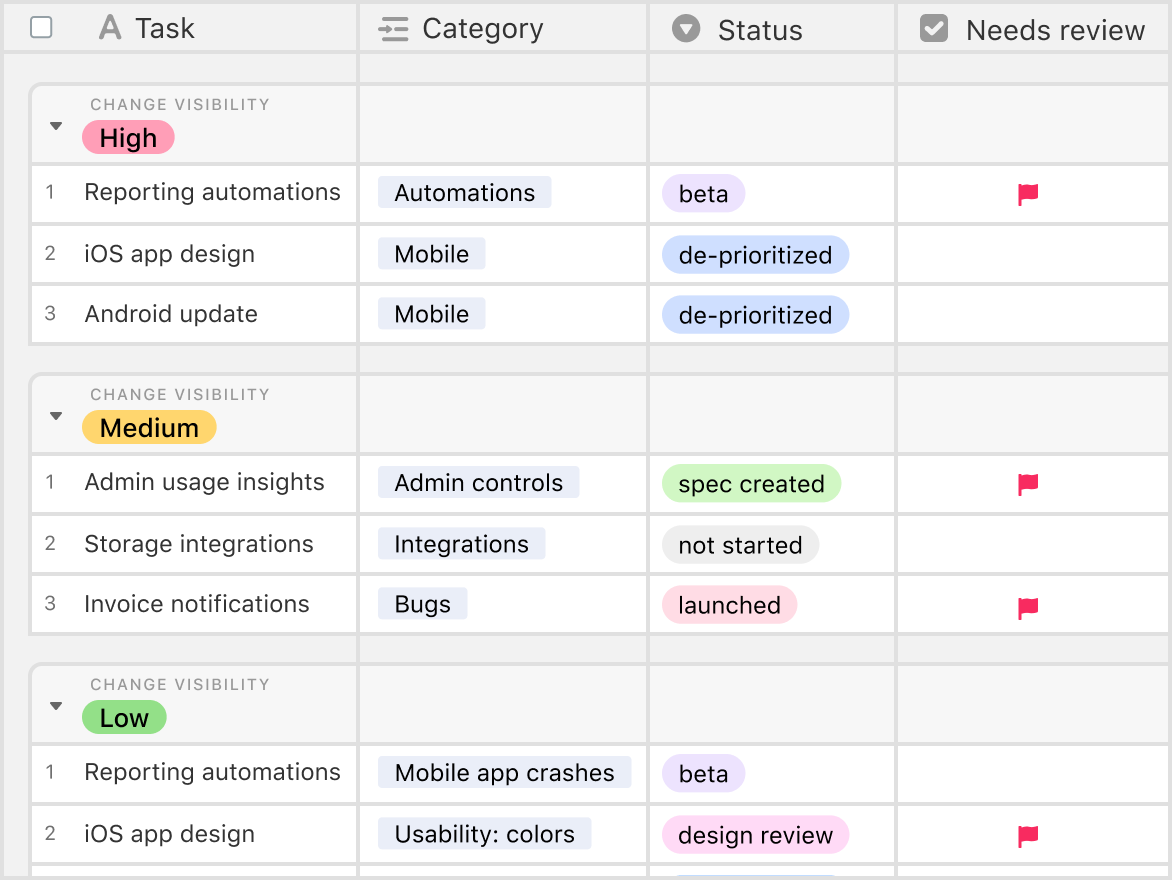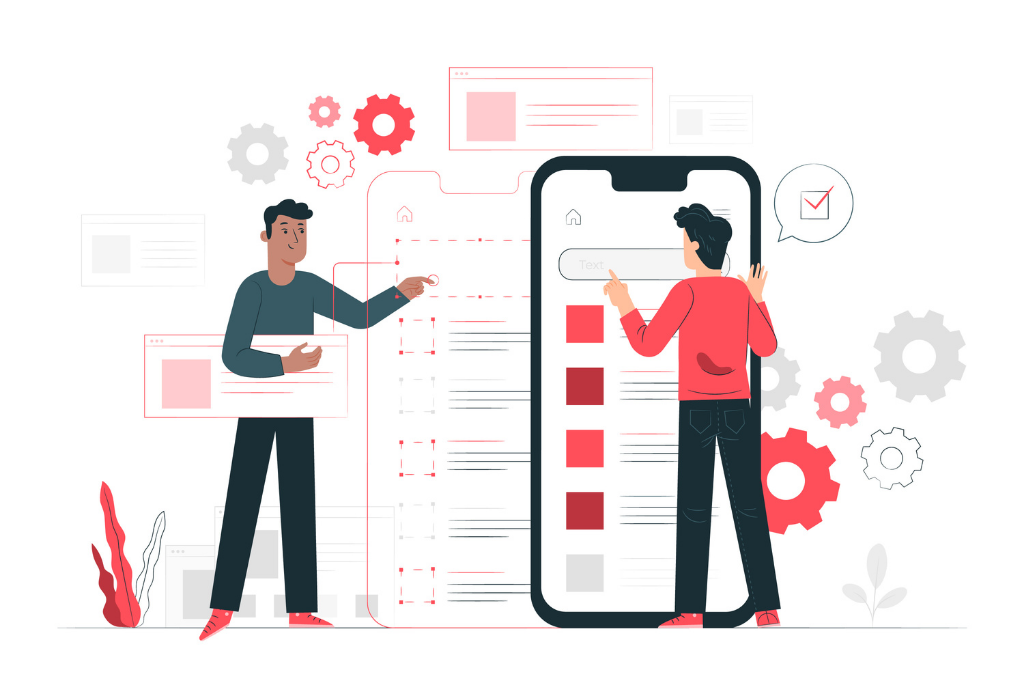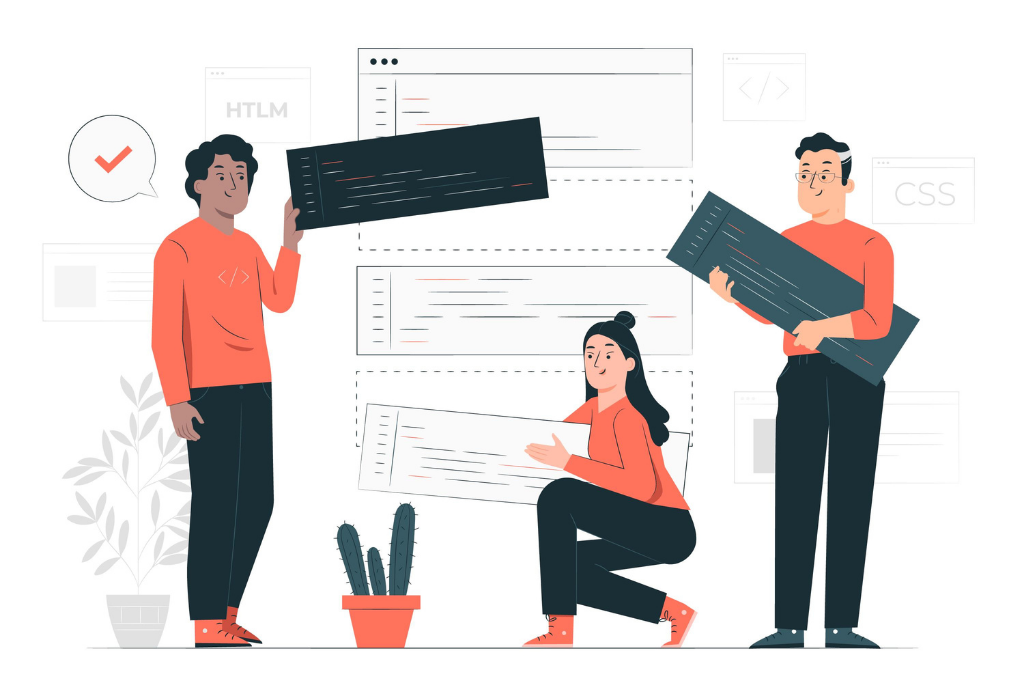The evolution of next-gen technologies is making application development and deployment more accessible, faster, and synchronized. Permitting development teams and managers to create scalable and innovative solutions with almost no coding.
A blessing at a time when speed is everything.
While custom solutions give you a better window to customize your application per very specific requirements, they also take some time to get up and running. Combine this with the added costs of cloud hosting and the technical expertise involved.
It's a lot of time and resources spent. Think a minimum of six weeks for a basic application and around two-three developers.
These days, we get a lot of platforms that cut short the journey for you. Things have gone as simple as using drag and drop website builders to assemble needed modules and release applications 10x faster.
Without writing a single line of code.
There's a reason why the ready-to-work no-code platforms are picking up pace with enterprises and companies that are focusing on digitalizing their business operations. Especially advantageous when most of us are working in a hybrid environment and don't have all our people working together under one roof.
According to Forrester's prediction, the no-code development platform market will grow to $21.2 billion in 2022 from $3.8 billion in 2017.
That's about 7x growth in five years.
It's interesting how more and more organizations are supporting this development approach with every passing year. And it comes down to the hard pros of these platforms over the traditional development.
We'll discuss that in a bit, let's first go over what exactly low-code development means.
What Is No-Code Development?
'No-code' development is what the term says. Exactly.
Developing applications without writing a single line of code.
In technical terms, no-code development is a modern way of development that allows users to develop applications through visualization tools and an interactive user interface. With no-code technology, you don’t need to hire expert professionals to build apps. Even a non-coder can work around it.
About five-six years ago, we would have wondered how app development can be possible with no coding at all?
It is now. This approach is possible via special no-code platforms developed to create applications of various scales that can be put to use fast and at nominal charges. The costing is based on the user count and the number of applications extracted from it.
Yes, you can use a single no-code platform to develop more than one application.
Companies today are exhausted and overwhelmed with issues like integrating different platforms, managing risk, hiring skilled developers, insufficient speed in developing an app, and so on.
All they need is a powerful automated system that is easy to access and ensures fast workflows and processes.
Look at the advantages if you shift to no-code development - you'll be able to release multiple applications to solve multiple operation challenges and, in turn, make way for an accelerated digitalization and automation of the organization-wide processes.
So, now we know about the approach. Next is how to do this. The platforms that make the no-code development feasible and faster.
What is a No-Code Platform?
A no-code platform is a GUI-based platform that provides users with an interactive interface to build engaging and full-fledged applications using drag-and-drop functionality.
Overall, it provides a visual environment and an automated setup to lighten your team’s workload and boost collaboration.
There are several good no-code platforms popular with the organizations like Jotform Apps, Zapier, Airtable, Creatio, and more Each of them offers different features and price points for different organization-size and usability. A lot of the advanced features can be unlocked once you go up the subscription type.
Some of the common features of the no-code platforms include:
- Pre-built templates: Now, application development is as simple as choosing the type of app you want to develop from a series of templates available and add additional features and branding. You may get templates centered around certain common workflow challenges across departments like HR, CRM, Marketing to sales handover, and more. You are also free to create your app from scratch.
- Integrations with other platforms/apps: Email and app integrations are also available with most of the no-code platforms.
- Fast uptime & hosting support: Unlike custom apps, the hosting is on the platform's head. This means you don't have to worry if there's a server error. They'll fix it up for you. This also means you can actually release these applications faster than regular ones.
- Built-in actions & workflows: You can predefine logic and the workflows inside the applications for easy usage across teams. Some of them also come with branching logic to filter out actions.
You can simply automate everything that can be automated.
Why choose No-Code Platforms?
According to research by McKinsey & Company, tasks that occupy 45% of employee time could be automated by adopting proven technologies.
In its practical use, no-code platforms act as a workflow management tool that provides you a secure and collaborative workspace where teams can share updates, map out workflows, automate business processes, and so on (as we can see in the features they offer in the above section). They keep track of ongoing IT projects.
There are various reasons why organizations are moving the no-code way. Including the following factors and then some.
Improved Business Agility
Business agility facilitates enterprises to respond to market changes and explore new opportunities with innovative digital solutions.
Here, most of the application development is done via a drag-and-drop interface using pre-built modules. You can also build cloud applications that integrate with some legacy systems.
All this contributes to a scalable and sustainable business workflow which makes things simpler for the people and teams involved.
High Speed And Performance
The platform’s capability to accelerate the applications delivery is vital to boost business growth and innovation. Developing apps is faster in no-code platforms.
Third-party integrations play a crucial role in scaling your web applications. With no-code platforms, these integrations can be flawless without coding.
Moreover, it eliminates time-consuming application deployment and operation processes.
Reduced Cost
Cost reduction is one of the significant advantages of no-code platforms.
As we know, hiring a skilled pool of developers is a costly affair and a time-consuming process. The no-code platform lessens the burden of developers to work overnight on the application development process. With these automated tools, you can build apps faster and cheaper in minimal time.
Increased Productivity
Businesses often realize that the development teams are burdened or overloaded while receiving requests from other teams. They believe that there should not be any dependency left while working on no-code platforms.
The automated tool makes workflows and operational processes faster that ultimately improves productivity. You can now develop applications in days and hours instead of spending months.
Ready-to-use Templates and Easy Customization
Using no-code platforms, you can develop hassle-free web applications faster. The ready-to-use templates with no cost involved help build you an innovative and smart app.
You just need to select the template, drag and drop the toolset, use the features and functionality in-built you require, and start developing an app.
What Does A No-Code Platform Offer To You?
No-code development facilitates businesses to accelerate operations faster, adapt to changing competitive environments, and respond to customer needs in no time.
Curious how a no-code platform looks like from the inside? Here are some snaps from Airtable.
This particular section is from their Product workflows template which can be rearranged and branded based on the requirements.

This one goes deep into automation.

As you can see, most of the sections can be color-coded and renamed based on what you need. And this forms the crux of no-code development.
Quick Drag-and-drop Functionality
No-code platforms equip with drag-and-drop functionality that allows faster app development. Here you can simply drag and drop different components in the builder and start building your app.
The platform helps developers build the structural layout of their web pages without writing even a single line of code. It is a quick and easy-to-use drag and drops UI where you can use a template and build apps the way you want.
Third-Party Integrations
You cannot build an innovative app without integrating third-party tools. Users can easily incorporate different features and functionality in their web apps with no coding.
Also, you can deploy these integrations safely and securely without investing your time and cost.
Automated Processes
The automated processes in the no-code platform help developers build web applications without any dependency on other teams. No-code platforms help to create workflows more straightforward and automated.
A no-code platform with full-fledged business features and functionalities accelerates your software projects in the long run.
Low-Code Versus No-Code: How To Choose The Right Platform For Your Business?
If no-code platforms allow you to develop applications with fixed modules, low-code platforms give you some freedom to customize them a bit with the help of minimum coding.
Both low-code and no-code platforms ensure speed, agility, and flexibility to an application.
Both of them are bringing the most significant change in the app development industry.
Both have certain advantages and disadvantages associated with them.
Now the question is - which one of them is more fruitful to your business?
Let’s explore what the significant difference between them is.
Coding knowledge: No-code technology doesn’t need any particular skillset to develop the platform’s application. Since there no coding is required, it can be easily accessible to any end-business user. On the contrary, low-code technology needs coding skills to access the platform and streamline the application development process.
Interface Design: No-code platform enables users to select a template, drag and drop tools, use in-built features and functionalities and develop an application. In contrast, low-code platforms provide an interface where app development is more dependent on coding than no-code. To manage an app’s core architecture, developers need to perform coding at a certain level.
User Interface: No-code platform relies on a preset UI layer that streamlines applications design. On the contrary, low-code platforms offer flexibility in UI at the cost of additional coding requirements.
Type of Applications: No-code platforms can be used to develop enterprise-grade applications, mobile applications, and many more. You can use applications for front-end use-cases. At the same time, low-code platforms assist in developing standalone mobile applications, web applications, and portals. You can build any type of application except mission-critical systems that integrate with backends.
Here's the core difference between the two platforms:
| Low-Code | No-Code |
| Serves only developers | Serves both developers and non-coders |
| Little coding required | No coding required |
| Mostly used to build complex applications | Widely used for reporting, analytics, and tracking apps |
| Complete customization available | Pre-built templates can be customized |
| Rapid application development tool for future purpose | Self-service application development tool for business users |
| All platforms provide end-to-end development | Limited capabilities provided by some platforms |
No-Code Is The Future
No-code is a trend that is here to stay. Especially when the requirements surrounding digitalization are at an all-time high.
Today, businesses realize the value of no-code platforms as they get an interactive workspace and a platform to develop apps faster in minimal time. It is helping development teams to explore the numerous opportunities to build scalable solutions without coding.
Gartner predicted that about 75% of the prominent organizations would use both low codes and no-code tools by 2025. There is no doubt that this number is going to be higher in the coming future.
No-code and low-code is undoubtedly the future of app development.
























